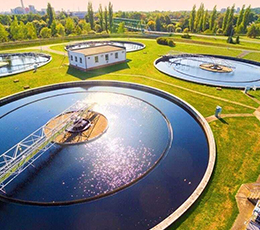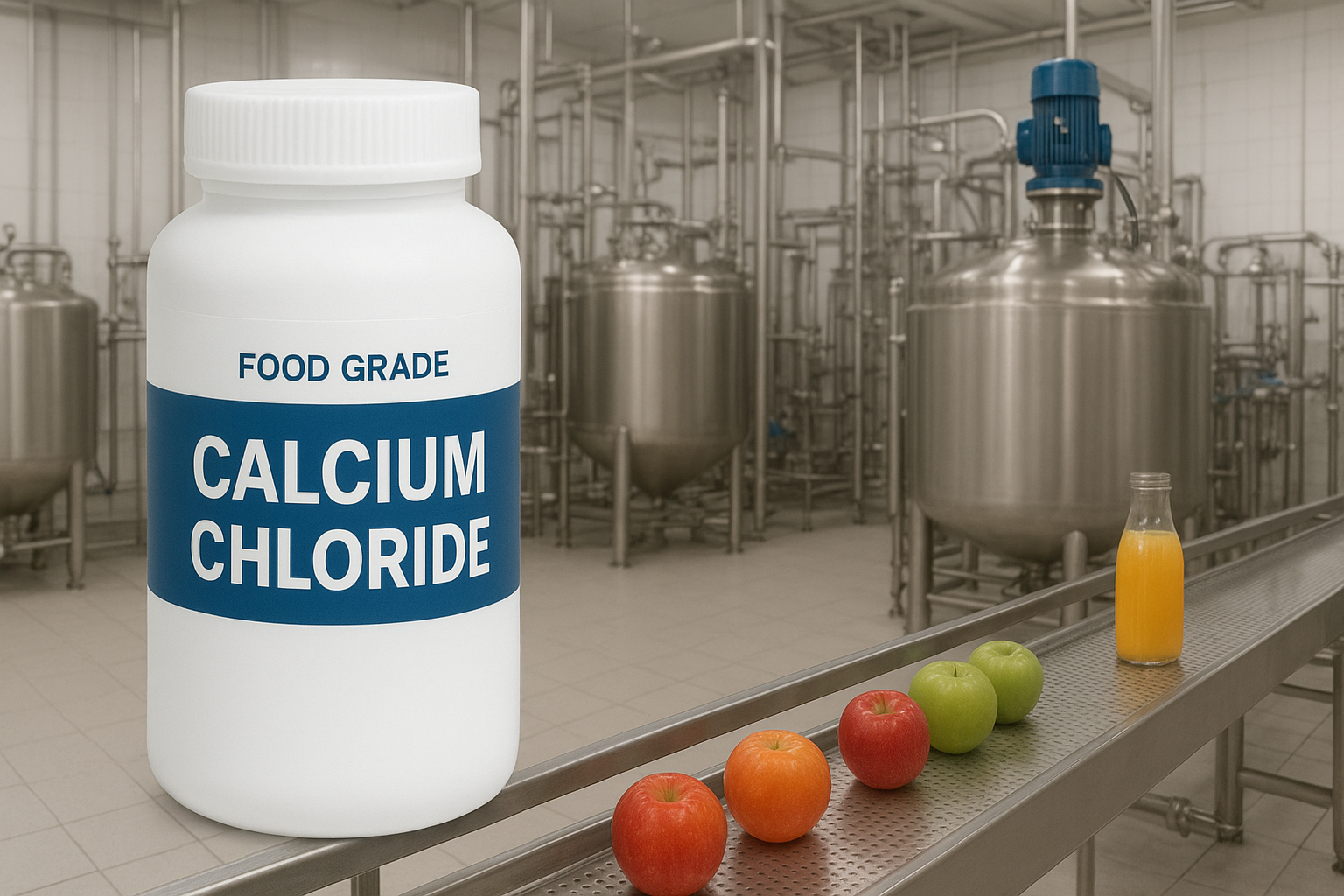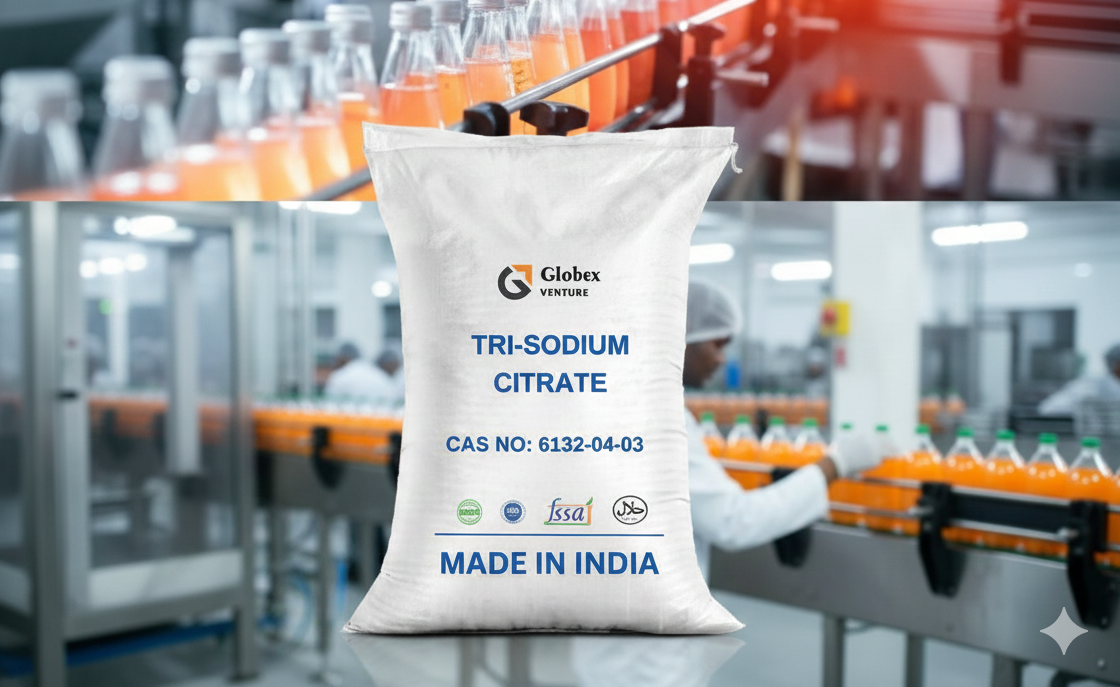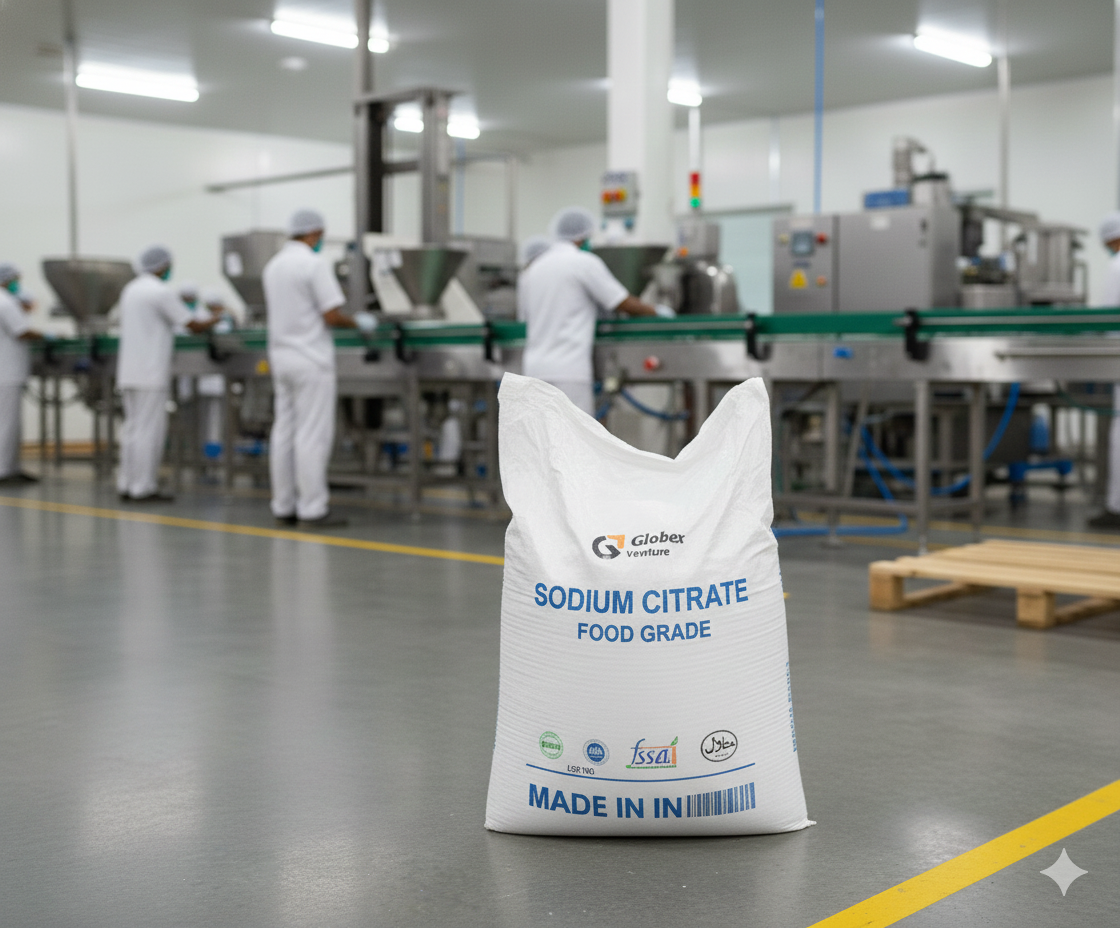In the modern food industry, keeping food fresh, tasty, and safe is very important. Every small ingredient helps make a big difference. One ingredient is food-grade calcium chloride. It is a simple but strong compound found in many foods we eat daily.
This food additive helps keep fruits firm in cans, prevents spoilage in seafood, and balances minerals in drinks. It acts as a texture enhancer, preservative, and even a calcium supplement. For food processors, it’s an easy way to improve food quality, extend shelf life, and meet food safety standards.
In this blog, we’ll explore what calcium chloride is, how it’s used in food, and why it’s safe for people to consume. By the end, you’ll see how calcium chloride in food supports freshness, quality, and global food processing success.
What is calcium chloride in food?
Calcium chloride (CaCl₂) is a white, crystalline salt made by combining calcium and chlorine. The food grade version is highly purified. It is safe for people to eat. It is also used in construction and de-icing.
When a product is labeled “calcium chloride food grade,” it means it meets strict safety and purity standards. These standards include FCC (Food Chemical Codex) or Codex Alimentarius. It is approved for use as additive E509 in the global food industry.
Food-grade calcium chloride is a useful additive. It helps keep food stable, improves texture, and preserves it. It does this without changing the flavor or nutritional value.
How Is Calcium Chloride Used in Food?
1. Fruit and Vegetable Processing
In canned fruits, pickles, and vegetables, calcium chloride in food helps maintain firmness. It boosts the natural pectin in plant cell walls. This helps fruits like pineapple, mango, and lychee stay firm during heating or storage.
It’s a firming agent that ensures your canned or preserved products stay crisp and visually appealing.
2. Seafood and Meat Processing
In the seafood industry, calcium chloride acts as a texturizing and moisture-control agent. It helps shrimp, squid, and fish maintain their shape after thawing or freezing.
In meat brining, it enhances water-binding capacity, keeping products juicy and tender even after long storage periods.
3. Cheese and Dairy Production
During cheese making, calcium chloride restores calcium balance in pasteurized milk, improving curd formation and final yield. This results in better texture, less waste, and more consistent product quality.
4. Beverage Industry
Calcium chloride is found in sports drinks, bottled water, and soft drinks. It helps add minerals and balance electrolytes. It also adds a mild salty note that enhances flavor and mouthfeel.
5. Snack Foods and Processed Items
For snack manufacturers, calcium chloride food grade helps in improving crispness and product stability. It can also act as a coagulant or stabilizer in some specialty food items like tofu or plant-based snacks.
Key Benefits of Using Calcium Chloride Food Grade
1. Improves Firmness and Texture
The primary benefit of using calcium chloride in food is its ability to improve texture. It strengthens cell walls in fruits and vegetables, ensuring a firm, appealing bite. This is especially important in canned fruits, pickles, and frozen vegetables.
2. Extends Shelf Life
Calcium chloride helps control microbial growth and reduce moisture activity, two key factors in spoilage. As a result, foods stay fresher for longer, reducing product losses during transportation and storage.
3. Maintains Product Appearance
Nobody likes mushy canned fruit or limp vegetables. By using calcium chloride, food processors can retain shape, color, and freshness, making products more appealing on the shelf.
4. Safe and Approved Additive
Food-grade calcium chloride is recognized as safe for human consumption by the FDA, EFSA, and WHO. It’s widely used across the world as an additive E509. When used within recommended limits, it has no negative health effects.
5. Cost-Effective and Efficient
Calcium chloride is cheaper than other firming agents like calcium lactate or gluconate. It also needs a lower dose to get the same results. This makes it ideal for large-scale food processors.
6. Supports Food Export Standards
For manufacturers targeting export markets, using certified food-grade calcium chloride is important. It helps meet international food safety rules that global buyers require.
Safety and Handling Guidelines
Although calcium chloride food grade is safe, proper handling ensures product integrity and worker safety.
- Store in a cool, dry, and airtight environment.
- Avoid contact with air or humidity, as calcium chloride absorbs moisture quickly.
- Use clean, food-grade tools for measuring and mixing.
- Wear gloves and masks during large-scale handling to prevent irritation.
- Always check expiry dates and batch numbers for traceability.
By following these simple steps, processors can maintain the purity and quality of the additive throughout its shelf life.
Regulatory Standards for Calcium Chloride in Food
In most countries, calcium chloride used in food must meet strict purity levels. Common quality standards include:
- FCC (Food Chemical Codex)
- Codex Alimentarius (E509)
- ISO 9001 / ISO 22000 certifications
- Certificate of Analysis (COA) from the supplier
Food processors should always ask for documents like the Material Safety Data Sheet (MSDS) and lab test reports. These documents help confirm purity, which is usually 94–96% or higher. Using certified materials ensures regulatory compliance and builds buyer confidence.
Why Food Processors Prefer Calcium Chloride Over Other Additives
Many additives claim to improve food quality, but calcium chloride stands out because it is natural, effective, and economical.
Compared to synthetic preservatives, calcium chloride:
- Does not alter flavor or aroma
- Works well in both acidic and neutral foods
- Requires low dosage to achieve firmness
- Is recognized globally as a safe additive
These qualities make it an ideal choice for fruit processors, beverage manufacturers, seafood exporters, and dairy producers.
Environmental and Sustainability Benefits
Today’s consumers and governments care deeply about sustainability. Fortunately, calcium chloride in food aligns well with eco-friendly goals:
- It is non-toxic and biodegradable
- It helps reduce food waste by extending shelf life
- It supports energy-efficient operations by improving process stability
Manufacturers can use this safe mineral additive. It helps improve both the environment and their profits. This is a great benefit for food businesses today.
Practical Examples in Food Manufacturing
Here are some real-world examples of how calcium chloride in food is applied effectively:
- Fruit canning: Keeps canned mangoes and lychees firm.
- Pickling industry: Maintains crunchiness in cucumbers and chili pickles.
- Seafood processing: Helps shrimp and squid retain natural texture during freezing.
- Dairy industry: Ensures proper curd formation in cheese.
- Beverages: Adds calcium to sports and bottled drinks for better nutrition.
These applications highlight the versatility and reliability of calcium chloride in various food sectors.
Conclusion: A Simple Additive That Delivers Big Results
For food manufacturers seeking to improve quality, safety, and shelf life, calcium chloride food grade is an indispensable solution. It helps maintain texture, reduce waste, and meet export standards all while being cost-effective and easy to use.
Calcium chloride can improve the quality of your food products. It helps fruits, seafood, and beverages look better, taste fresher, and last longer.
Are you looking for a reliable manufacturer? Do you want to enhance the quality of your food products? Think about using high-purity food-grade calcium chloride. It is important to choose a trusted, high-quality supplier. This helps ensure safety, consistency, and better results.
Globex Venture helps food processors deliver consistent, market-ready products that meet global standards and satisfy consumer demands. Let our experts guide you in selecting the right grade, dosage, and application to achieve optimal results in your production process.
FAQ
- What is calcium chloride in food?
Calcium chloride is a safe compound used in food processing. It helps keep fruits, vegetables, and drinks firm, crisp, and stable while stored. - What are the uses of calcium chloride in the food industry?
It is used in canning, cheese making, drinks, and seafood processing. It helps improve texture, shelf life, and food quality. - What does calcium chloride do in food processing?
Calcium chloride strengthens texture, helps curd formation in cheese, and controls moisture in canned and processed foods. - Is calcium chloride safe to use in food?
Yes, food-grade calcium chloride is safe. It is safe when used as directed by authorities like the FDA and EFSA. - What are the benefits of using calcium chloride in food processing?
It improves food texture, firmness, shelf life, and consistency, helping processors produce high-quality, stable products. - Are there any risks or side effects of calcium chloride in food?
When used in the correct amounts, it is safe, though excessive use may cause a slightly salty taste or mild digestive discomfort.
📩 Get in touch
📩 Email: info@globexventure.com
🌐 Website: www.globexventure.com
📞 Call: +91 92270 07600 / +91 76003 86854





